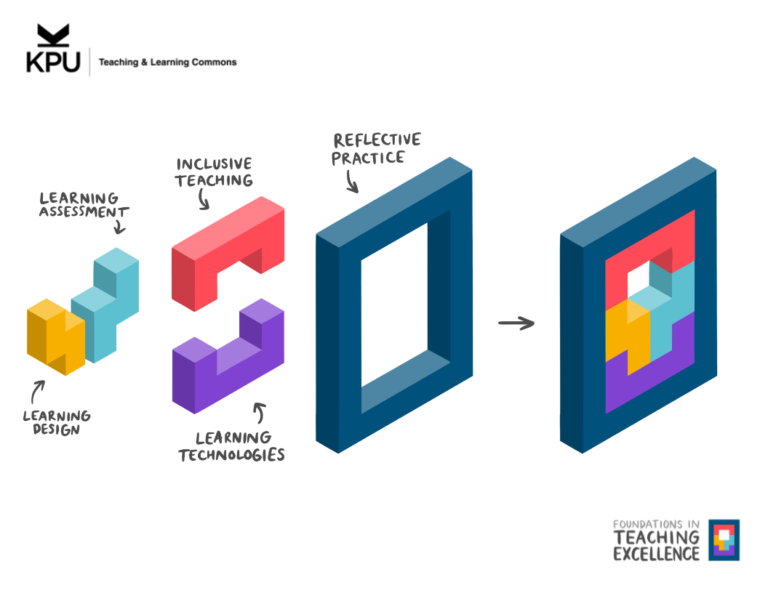Discussion Based Learning- Considerations for blended learning
“Learning through discussion is often aligned with learning through collaboration” (Laurillard, 2012). However, they are not the same pedagogical focus. The focus of collaboration is to produce something that has been created together. Discussion on the other hand is to explore concepts, negotiate meaning, share perspective and deepen understanding.
In a traditional classroom discussion is frequently used to break up the “lecture” format and allow students opportunity to contribute. But it has the potential to be so much more. When adult learners have opportunity to interact and share their ideas, it prompts an ongoing internal dialogue that continues to support learning when the discussion ends. Discussion offers opportunity for interaction and interaction is a key predictor of satisfaction with distance education courses, and increased levels of interaction tend to increase student perspective of learning being meaningful (McBride and Mould, 2008). Discussion as a key strategy for building interaction, however when designing a course for delivery in a blended format the decision of what to do online and what to do in class is paramount.
As part of a recent doctoral course I reviewed current literature on synchronous and asynchronous discussion formats and decided to share my key learning. By nature of its use of the internet, web conferencing to facilitate discussion-based learning is a perfect example of how digital learning occurs differently today than it could have in the past. So how do online educators decide when to discuss online and when to discuss in the classroom? Here are some of the benefits of each approach.
| Synchronous (web conferencing) | Asynchronous (text-based discussion forums) |
| – Record sessions for later review of f/u online discussion – Allows interaction from multiple locations – Whiteboard and screen sharing allow for group problem solving – Break out rooms create opportunities for virtual collaboration – Students develop argumentation skills – Verbal expression and defense of one’s ideas or position – Saves faculty time – Immediate feedback to questions – Flexibility of access | – Any time learning for busy adult learners – More comfortable for students who may be quiet, have learning challenges, English as second language etc to take time and formulate ideas – Opportunity to reflect, formulate thoughts and look things up – Self- paced |
At KPU we have used Bluejeans and Skype for Business for web conferencing and we are currently piloting Big Blue Button which will interface seamlessly with the Moodle Learning Management System. Additional uses for web conferencing tools in the distance education environment might include virtual office hours or small group work outside of the scheduled synchronous sessions.
It has been suggested that a mixture of both synchronous and asynchronous provides the optimal opportunity for collaboration, reflection and content delivery. So, when determining to sync or not to sync, consider your learning outcomes. If reflection or inquiry are your principle objectives, then an asynchronous approach is ideal. If exploring a new or complex topic is on your agenda and collaboration is your desired outcome, then a synchronous conference is the way to go. By providing a variety of learning experiences we better meet the needs of a variety of learners and provide opportunities for meaningful learning to occur. With or without the teacher present, in class or online- discussion adds value to the learning environment.
Resources
Clark, C., Strudler, N. and Grove, K. (2015). Comparing Asynchronous and Synchronous Video vs Text Based Discussions in an Online Teacher Education Course. Online Learning, 19 (3), 48-68.
Ellingson, D. A., & Notbohm, M. (2012). Synchronous Distance Education: Using Web-Conferencing In An MBA Accounting Course. American Journal of Business Education (AJBE), 5(5), 555. https://doi.org/10.19030/ajbe.v5i5.7212
Klonoski, R., & Combs, R. (2011). Web Conferencing As Classroom: A New Opportunity In Distance Learning. Contemporary Issues in Education Research (CIER), 2(3), 47. https://doi.org/10.19030/cier.v2i3.1086
McBride, D.L. and Muhlbach, P.M. (2008). Strategies to integrate Web Conferencing Software into Online Counselor Education Course. I-manager’s Journal of Educational Technology, 4(4), 1-8.
Laurillard, D. (2012). Chapter 9 – Discussion Based Learning. Teaching as a Design Science: Building Pedagogical patterns for Learning and Technology. Routledge, New York, 141-161.
Reushle, S. and Loch, B. (2008). Conducting a Trial of Web Conferencing Software: Why, How, and Perceptions from the Coalface. The Turkish Journal of Distance Education, 9 (3), 19-28. https://doaj.org/article/0a4f26b6fc18489fbd78511716a2196d
Skylar, A. (2009). A Comparison of Asynchronous Online Text-Based Lectures and Synchronous Interactive Web Conferencing Lectures, 18(2), 16. https://doaj.org/article/0a4f26b6fc18489fbd78511716a2196dSkylar
Leeann leads the Learning Technology and Educational Consultant teams in their efforts to support innovation in teaching and learning at KPU. Leeann oversees and advances existing KPU supported educational technologies and tools to align with institutional values and current best practices. Previously an experienced faculty member, Leeann holds a Post Masters Certificate in Curriculum Design and is a doctoral candidate in the Distance Education EdD at Athabasca University. Leeann is an advocate for the culture of folio thinking pedagogy and its potential to revolutionize KPU's learning landscape.



